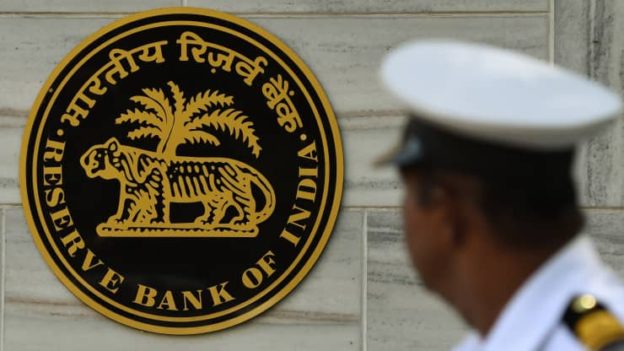- The Nifty Bank index was up 1.36% while the Nifty PSU index — which captures the performance of India’s public sector banks — rose 1.38%. T
- They outperformed the benchmark Nifty 50, which was up only 0.61%.
- The Reserve Bank of India announced a term liquidity facility of 500 billion rupees ($6.78 billion) to ease access to emergency health services.
- The RBI also announced other measures targeted at helping India’s micro, small and medium-sized businesses, including allowing certain small borrowers to extend their repayment period.
Indian banking shares jumped on Wednesday after the central bank introduced measures to boost lending as the coronavirus crisis continues to take its toll on the country.
The Nifty Bank index was up 1.36% while the Nifty PSU index — which captures the performance of India’s public sector banks — rose 1.38%. They outperformed the benchmark Nifty 50, which was up only 0.61%.
Shares of major lenders jumped after the announcement. Bank of Baroda traded 2.2% higher, IndusInd Bank added about 2%, HDFC Bank gained 0.8%, Axis Bank was up 2.05% while the State Bank of India advanced 0.85%.
RBI announces measures to facilitate lending
The Reserve Bank of India will monitor the economic impact of India’s second wave of Covid-19 infections and deploy all resources possible to ease the economic stress, governor Shaktikanta Das said on Wednesday during an unscheduled speech.
His announcement came as India crossed another grim milestone on Wednesday. Coronavirus deaths rose by a record 3,780 in the last 24 hours, with total reported fatalities over 226,000, according to the latest data from the health ministry. On Tuesday, India became the second country after the United States to cross 20 million reported cases.
The central bank governor announced plans to inject 500 billion rupees ($6.78 billion) of liquidity to ease access to emergency health services. The move would allow commercial banks to borrow money from the central bank through repurchase agreements, or repos, and lend it out to Covid-19-related businesses.
To boost provision of immediate liquidity for ramping up Covid-related health-care infrastructure and services in the country, the central bank will open a liquidity window of 500 billion rupees ($6.78 billion), with tenors of up to three years at the repo rate that will be available until March 31, 2022, Das said.
The repo rate is the key lending rate at which the RBI lends to commercial banks. It is currently at 4%.
Das explained that under the scheme, banks can provide fresh loans to a variety of businesses and entities including vaccine manufacturers, importers and suppliers of vaccines and Covid-related drugs, as well as manufacturers and suppliers of oxygen and ventilators.
Banks would be able to lend to borrowers directly or through intermediary financial institutions that are regulated by the central bank and the lenders are expected to create a “Covid loan book” under the scheme, according to the central bank governor.
The RBI also announced other measures targeted at helping India’s micro, small and medium-sized businesses and financial entities at the grassroot level that are bearing the “biggest brunt” of the second wave of infections. That includes allowing certain small borrowers with exposures of up to 250 million rupees to restructure their loans by Sept. 30, 2021 — provided they did not restructure their loans last year under earlier programs and were classified as “standard” accounts as of March 31.
Uncertain economic recovery
The South Asian nation is currently facing a devastating second wave that has forced several states to go into lockdowns while others have stepped up social restrictions. On Tuesday, India crossed 20 million Covid-19 cases and its official death toll exceeded 222,000 fatalities.
Economists have warned that the ongoing crisis will likely delay India’s economic recovery. Last year, a two-month national lockdown derailed growth and pushed the South Asian economy into a technical recession.
Local media reports, citing sources, said that banks have been looking to the RBI for relief measures to help borrowers battle the second wave of Covid-19 and provide relief to lenders’ balance sheets in light of a potential surge in bad loans.
https://www.cnbc.com/2021/05/05/india-covid-central-bank-rbi-measures-to-prop-up-economy-ease-lending.html?fbclid=IwAR0Yg6mb-QYfJPHMJxK0TWIpueLG_I4OiM5_zSGgfWMj8ZczMwhZpXMLJHY





